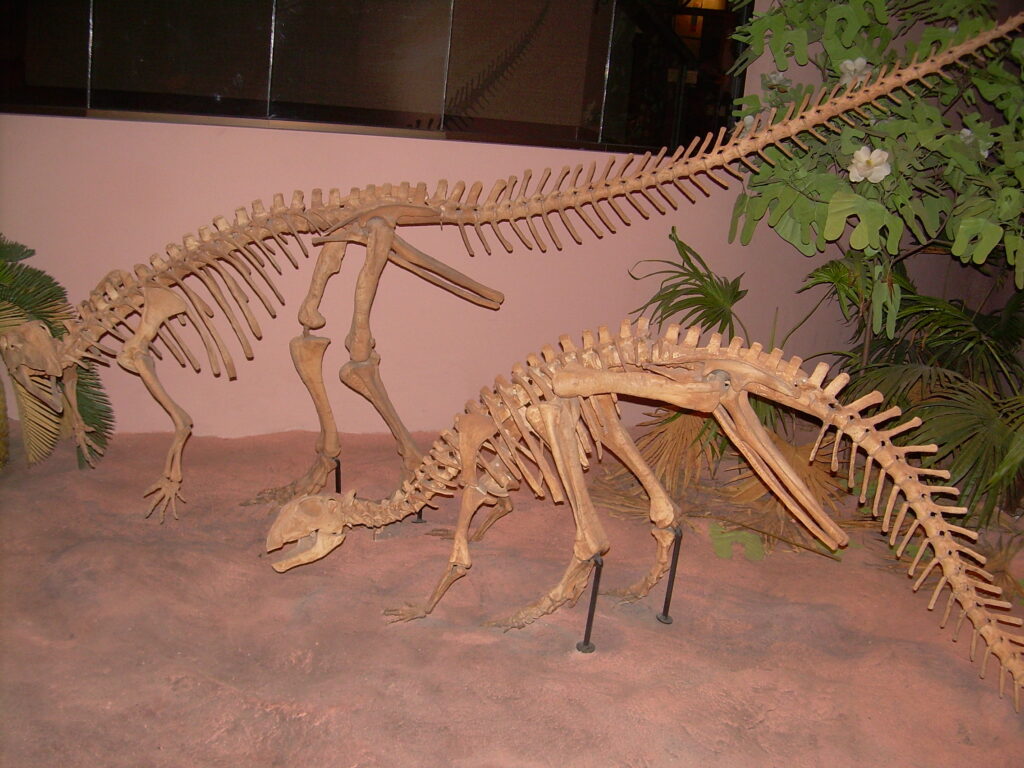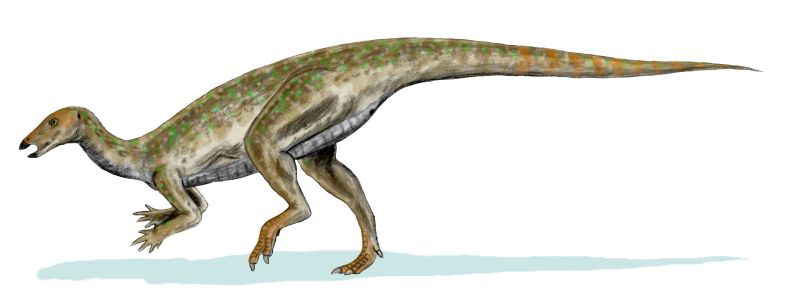In the dense forests of Cretaceous China, a small, feathered dinosaur glided from branch to branch, showcasing one of nature’s most fascinating evolutionary experiments. Microraptor, with its four feathered limbs, represents crucial evidence in understanding the transition from dinosaurs to birds. Discovered in the fossil-rich Liaoning Province of northeastern China in the late 1990s, this remarkable creature has revolutionized our understanding of avian evolution and the origins of flight.
Its unique four-winged body plan suggests that flight may have evolved through stages that scientists hadn’t previously considered, potentially beginning with gliding from trees rather than running from the ground. As we explore this fascinating creature, we’ll discover how Microraptor provides a window into one of evolution’s most remarkable transformations.
Discovery and Naming: Unearthing an Evolutionary Marvel

Microraptor was first described scientifically in 2000 by Chinese paleontologist Xu Xing and his colleagues, who studied specimens recovered from the famous Jehol Biota in Liaoning Province, China. The genus name combines “micro,” meaning small, with “raptor,” meaning thief or seizer, aptly describing this diminutive predator that measured only about 77-90 centimeters (2.5-3 feet) in length. The initial discovery created immediate scientific excitement because of the creature’s exceptional preservation, which included clear impressions of feathers on all four limbs.
Since its initial description, multiple well-preserved specimens have been found, making Microraptor one of the best-studied feathered dinosaurs. The most common species, Microraptor gui, was named in honor of Chinese paleontologist Gu Zhiwei, while other recognized species include M. zhaoianus and possibly M. hanqingi, though taxonomic debates continue about whether these represent distinct species or variations within a single species.
Age and Environment: The Cretaceous Forests of Ancient China
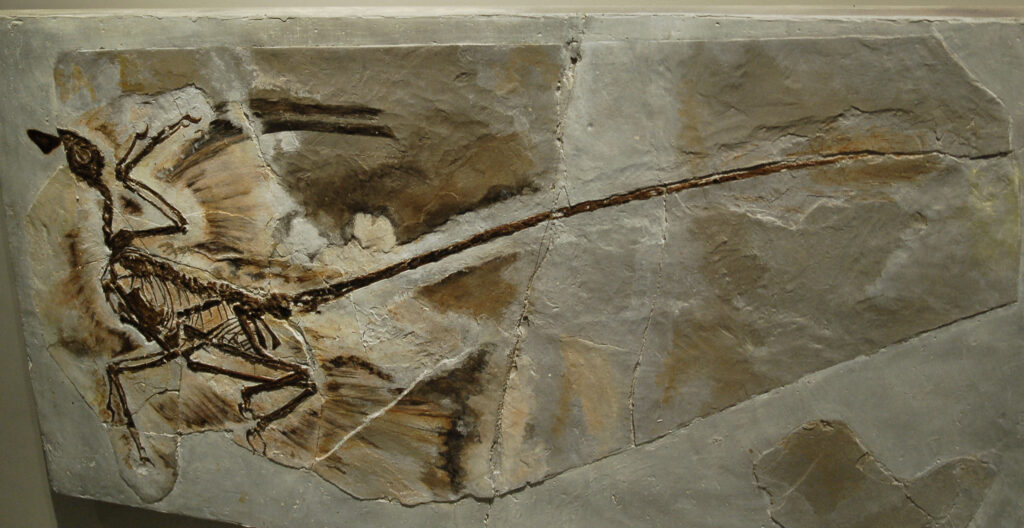
Microraptor lived approximately 120 million years ago during the Early Cretaceous period, inhabiting what is now northeastern China. The environment at this time was dramatically different from today’s landscape, consisting of dense, humid forests surrounding lakes in a temperate climate. This ecosystem, preserved in the Jehol Biota, was remarkably diverse, hosting numerous species of dinosaurs, early birds, mammals, fish, amphibians, and insects. Volcanic activity in the region periodically caused mass mortality events, but also created perfect conditions for exceptional fossil preservation.
The lakes and surrounding forests offered Microraptor an ideal habitat, with abundant trees for gliding and a diversity of small prey animals. Evidence suggests these forests experienced seasonal changes, possibly requiring Microraptor to adapt to varying food availability throughout the year. The rich biodiversity of this ancient ecosystem provided both competition and prey for these small, agile predators.
Anatomical Features: A Blueprint for Flight Evolution

Microraptor’s most distinctive feature was its four wings – feathered structures on both its arms and legs that created a biplane-like configuration unprecedented in the fossil record. These wings consisted of asymmetrical flight feathers similar to those of modern birds, with a central shaft and vanes of different widths on either side, strongly suggesting aerodynamic function. The creature had a small skull with sharp, serrated teeth adapted for a carnivorous diet, and its skeleton was lightly built with hollow bones, similar to modern birds.
Particularly notable was its long, feathered tail that ended in a diamond-shaped fan of feathers that likely provided stability during gliding. Microraptor’s hands retained three clawed fingers, while its feet had four toes with curved claws that would have been excellent for perching on branches. Most remarkably, the entire body was covered in feathers, including pennaceous feathers (resembling those of modern birds) on its limbs and what appears to be a coat of simpler, downy feathers on its body, suggesting not only flight capabilities but possibly some degree of thermal regulation.
The Four-Wing Configuration: Nature’s Biplane Design
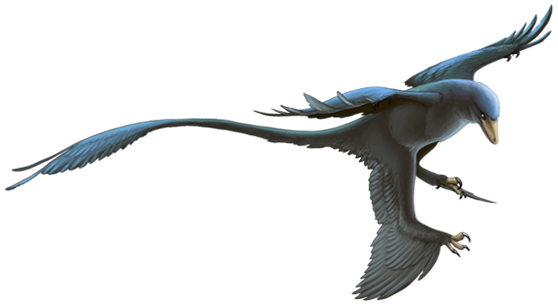
Microraptor’s four-wing arrangement represents one of the most fascinating anatomical configurations in the fossil record, featuring large, asymmetrical flight feathers on both its arms and legs. This “biplane” design has no modern equivalent and has sparked considerable scientific debate about its aerodynamic properties and evolutionary significance. The hindlimb wings extended from the animal’s ankles and formed a second pair of airfoils that would have worked in conjunction with the forelimb wings during gliding.
Computer modeling and wind tunnel tests with Microraptor models suggest this arrangement would have been surprisingly effective for controlled gliding, potentially allowing the animal to travel significant distances between trees with minimal energy expenditure. Some researchers have proposed that the hindlimb wings may have also assisted in maneuverability, perhaps allowing the animal to make tighter turns than would be possible with forelimb wings alone.
This unique configuration may represent an early evolutionary experiment in flight surfaces, one that was eventually abandoned as the lineage that led to birds refined their flight capabilities through forelimb-dominated wing systems.
Locomotion and Flight Capabilities: Master of the Trees

Microraptor was primarily an arboreal animal adapted for life in the trees, with its flight capabilities best described as controlled gliding rather than powered flight. Biomechanical studies suggest it likely climbed trees using its sharp claws, then launched itself to glide between branches or to the ground. Computer simulations indicate that Microraptor could achieve stable glides covering distances of 20-40 meters while maintaining control of its trajectory through subtle adjustments of its wings and tail.
The arrangement of hindlimb feathers poses interesting questions about terrestrial movement – when on the ground, Microraptor would have needed to keep its leg feathers clear of the surface, perhaps by adopting an unusual gait or temporarily folding these feathers. Some research suggests it might have been capable of limited flapping to extend its glides, representing an intermediate stage between pure gliding and the powered flight seen in modern birds.
The discovery of Microraptor has fundamentally challenged the traditional “ground-up” theory of flight evolution, lending significant support to the alternative “trees-down” hypothesis, which suggests flight evolved first through gliding from elevated positions.
Diet and Hunting Behavior: A Versatile Predator

Remarkably preserved Microraptor fossils with stomach contents have provided direct evidence of this dinosaur’s diet, revealing it to be a versatile predator with a varied menu. Multiple specimens contain remains of small birds, fish, and mammals, indicating Microraptor was an opportunistic hunter capable of capturing prey both in trees and potentially from water surfaces.
One particularly striking specimen preserved the remains of a bird in Microraptor’s stomach, while another contained fish bones, suggesting an ability to hunt across different habitats. Its sharp, serrated teeth were ideal for slicing through flesh, while its relatively large eyes suggest good vision, likely essential for spotting and pursuing prey through the forest canopy.
Based on its anatomy and preserved stomach contents, paleontologists believe Microraptor may have employed multiple hunting strategies, including perch-and-pounce ambushes from tree branches and possibly even skimming water surfaces to snatch fish. This dietary flexibility would have been advantageous in a seasonal environment where particular food sources might become temporarily scarce.
Plumage and Coloration: Dressed in Iridescent Black

One of the most extraordinary aspects of Microraptor fossils is the preservation of not just feather impressions but actual evidence of original coloration, revealed through the study of melanosomes (pigment-containing structures) preserved in the fossilized feathers. Detailed analysis published in 2012 showed that Microraptor was predominantly black with an iridescent sheen similar to that seen in modern crows and grackles.
This iridescence would have created blue or purple highlights when the animal moved in sunlight, suggesting visual display may have been an important function of its plumage. The discovery of a consistent color pattern across multiple specimens indicates that this was indeed the creature’s natural coloration rather than a preservation artifact.
The black coloration might have provided camouflage in the forest canopy, especially during dawn and dusk hunting, while the iridescent quality could have played a role in species recognition or mating displays. Interestingly, modern birds with iridescent black plumage are often those that engage in complex courtship behaviors, raising the possibility that Microraptor may have engaged in similar social displays.
Growth and Development: From Hatchling to Adult
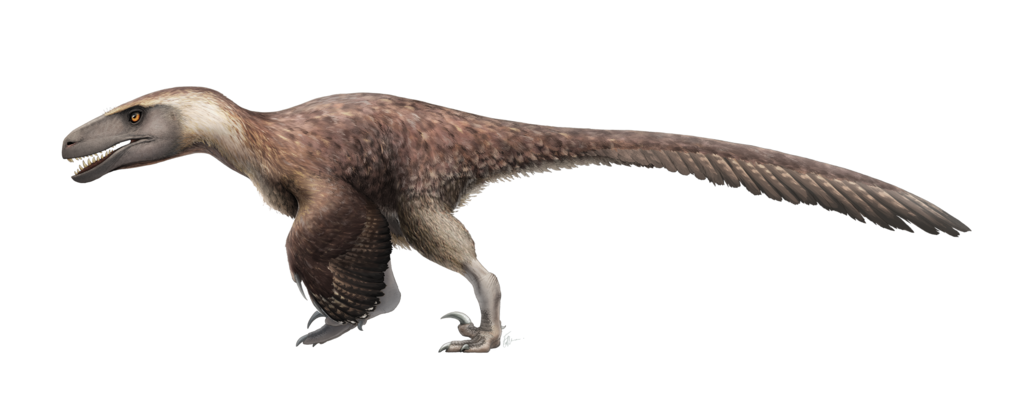
The discovery of multiple Microraptor specimens of different sizes has allowed paleontologists to piece together aspects of this dinosaur’s growth and development. Evidence suggests that Microraptor, like many other small theropod dinosaurs, grew relatively quickly compared to larger dinosaur species, potentially reaching adult size within 1-2 years.
Young Microraptor individuals appear to have had proportionally larger heads and eyes compared to adults, a pattern common in many vertebrates. One fascinating question involves when Microraptor developed its elaborate feathering – some evidence suggests that juvenile specimens already possessed well-developed flight feathers, indicating flight capabilities may have been present from a relatively young age.
Bone histology studies (examining the microscopic structure of Microraptor bones) reveal growth rings similar to those in modern birds but with some reptilian characteristics, highlighting its transitional evolutionary position. The relatively rapid growth to adult size would have helped young Microraptors become independent quickly, an advantage in a predator-rich environment where the vulnerability period needed to be minimized.
Evolutionary Significance: Bridging Dinosaurs and Birds
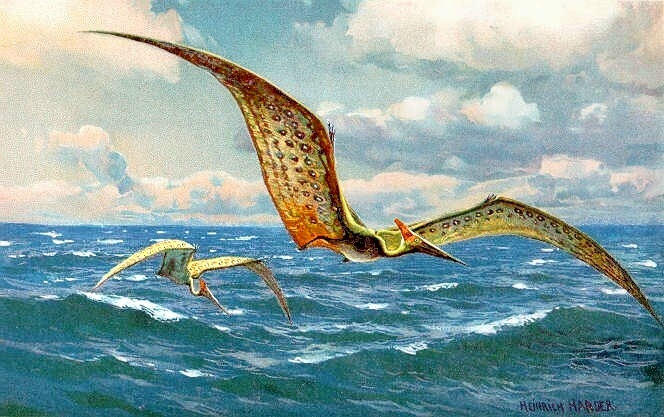
Microraptor occupies a pivotal position in the evolutionary transition from non-avian dinosaurs to birds, providing crucial evidence for the dinosaurian origin of birds that was once hotly debated. As a member of the Dromaeosauridae family (which includes Velociraptor), Microraptor belongs to the wider group of feathered theropod dinosaurs most closely related to birds.
Its mixture of dinosaurian characteristics (toothed jaws, long bony tail) and avian features (complex feathers, lightweight skeleton) perfectly illustrates the gradual nature of evolutionary transitions. The four-winged configuration of Microraptor suggests that flight evolution may have gone through a “tetrapteryx” (four-winged) phase before the hindlimb wings were reduced and lost in the lineage leading to modern birds.
Some researchers propose that Microraptor may represent a side branch rather than a direct ancestor of birds, demonstrating that flight adaptations were experimenting with different configurations during this crucial evolutionary period. Regardless of its exact phylogenetic position, Microraptor stands as compelling evidence that the boundary between “dinosaur” and “bird” was far more blurred than previously recognized, representing an important intermediate form in one of evolution’s most significant transitions.
Comparison with Early Birds: Similarities and Differences

When compared with early birds like Archaeopteryx (from about 150 million years ago) and contemporary Jehol birds like Confuciusornis, Microraptor reveals both striking similarities and important differences that illuminate the evolutionary relationships between dinosaurs and birds. Like early birds, Microraptor possessed pennaceous feathers, a furcula (wishbone), and other skeletal features associated with flight capabilities.
However, Microraptor retained more ancestral dinosaurian features, including a full complement of teeth (whereas some contemporary early birds were beginning to lose their teeth), a longer bony tail, and, of course, the distinctive hindlimb wings not seen in any known true bird. The brain and sensory capabilities of Microraptor appear intermediate between those of typical dinosaurs and birds, with enlarged areas devoted to vision and coordination but not yet reaching the proportions seen in true birds.
While Archaeopteryx and other early birds had already evolved a more bird-like body plan with flight primarily generated by the forelimbs, Microraptor represents a different, perhaps earlier experimental stage in flight evolution, utilizing both fore and hind limbs as flight surfaces. These comparisons highlight the diversity of adaptations that existed during this critical transition period, suggesting multiple evolutionary pathways were being explored simultaneously.
Research Controversies: Debates and Discoveries

Since its discovery, Microraptor has been at the center of several scientific controversies and debates regarding its lifestyle, flight capabilities, and evolutionary significance. One major point of contention has been the exact positioning of the hindlimb wings during gliding – early reconstructions showed them splayed horizontally in a biplane configuration, while later research suggested they may have been held more vertically beneath the body or at an intermediate angle.
Another debate concerns Microraptor’s habitat preferences and lifestyle, with some researchers arguing for a primarily arboreal existence while others suggest it may have been more terrestrial than originally thought. The discovery of multiple Microraptor species has led to taxonomic debates about whether these represent genuine species differences or variations within a single species showing sexual dimorphism or developmental changes.
Perhaps most significantly, Microraptor has become central to debates about the evolution of flight, with some paleontologists seeing it as evidence for the “trees-down” hypothesis while others caution that it may represent a specialized side branch rather than a stage in the direct lineage leading to modern birds. These ongoing scientific discussions highlight how Microraptor continues to challenge our understanding of avian evolution more than two decades after its initial discovery.
Fossil Preservation: Exceptional Details from Ancient Mud

The remarkable preservation of Microraptor specimens represents one of paleontology’s most exceptional windows into prehistoric life, capturing not just skeletal remains but also soft tissues and feather impressions in extraordinary detail. Most specimens come from the Jiufotang Formation in Liaoning Province, China, where fine-grained lake sediments and periodic volcanic ash falls created ideal conditions for exceptional preservation. The fine mud and rapid burial preserved even the most delicate structures, including individual feather barbs and the microscopic melanosomes that revealed the animal’s original coloration.
Many specimens appear to have been preserved following sudden death, possibly caused by volcanic gas emissions or ash falls, followed by immediate transport to the lake bottom where oxygen-poor conditions prevented decomposition. The resulting fossils, often compressed but retaining their articulation and soft-tissue preservation, provide paleontologists with information rarely available for animals from this time period. Several complete or near-complete specimens have been discovered, often preserved with wings and tail feathers splayed out in what appears to be a gliding posture, providing strong circumstantial evidence for their in-life function and positioning.
The Jehol Biota: Microraptor’s Ecosystem and Contemporaries

Microraptor existed within the remarkably diverse Jehol Biota, an ancient ecosystem that has been preserved in extraordinary detail through extensive fossil beds in northeastern China. This rich assembly of plants and animals included various other feathered dinosaurs like the larger Sinornithosaurus and the peacock-like Caudipteryx, as well as true early birds such as Confuciusornis and Jeholornis.
The dense forests surrounding ancient lakes were populated by primitive flowering plants, conifers, ginkgoes, and ferns, creating a multi-layered habitat that would have provided numerous ecological niches. The waters teemed with fish, including species that have been found in Microraptor’s stomach contents, while the shorelines and forests hosted amphibians, early mammals, and diverse insects. Among Microraptor’s potential predators were larger dromaeosaurids and primitive tyrannosaurs, while it likely competed with other small, arboreal dinosaurs and early birds for resources.
This complex ecosystem, preserved through multiple volcanic events that created layer upon layer of fossil-bearing strata, provides exceptional context for understanding Microraptor’s ecological relationships and evolutionary adaptations. The Jehol Biota represents one of the most complete ancient ecosystem snapshots available to science, allowing paleontologists to reconstruct the web of relationships that shaped Microraptor’s evolution and lifestyle.
Legacy and Significance: Changing Our View of Dinosaur-Bird Evolution

The discovery and study of Microraptor has fundamentally transformed our understanding of the dinosaur-bird transition and the evolution of flight, with implications that extend far beyond this single genus. Before Microraptor, the prevailing view leaned heavily toward a ground-up model of flight evolution, where running dinosaurs gradually developed longer feathers and eventually became airborne.
Microraptor provided compelling evidence for a trees-down alternative, where gliding preceded powered flight in the evolutionary sequence. Its exquisite preservation has also established beyond doubt that many dinosaurs possessed complex feathers identical in structure to those of modern birds, not just simple filaments as was once thought. In popular culture, Microrap


